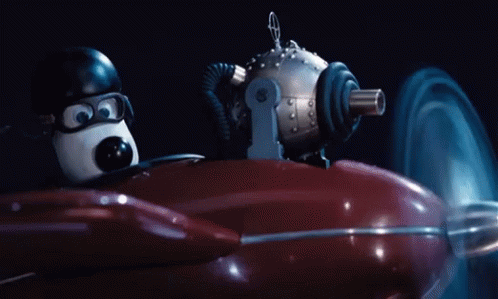Today, we'll travel to the outskirts of Bogotá to visit the so-called first wonder of Colombia, the Salt Cathedral of Zipaquirá. The cathedral was built inside a salt mine almost 200 meters deep.
To get to Zipaquirá, we decided to hire a taxi on our own, but you can also get there by bus, a private tour, or train. We considered going by train, but it only runs on Sundays and holidays, and we wanted to go during the week.
I will tell you about some of the stops we made on the way to and from Zipaquirá on another occasion. But today, I will focus on the visit to the Salt Cathedral.
The town of Zipaquirá is about 50 km from Bogotá. But with the traffic jams to get out of the city, it is a drive of more than an hour.
The taxi driver dropped us off at the parking area, close to which were the ticket offices. We bought the ticket, which included a guided tour of the cathedral. The cost was 77500 Colombian pesos per adult which at the exchange rate was about 17 dollars.
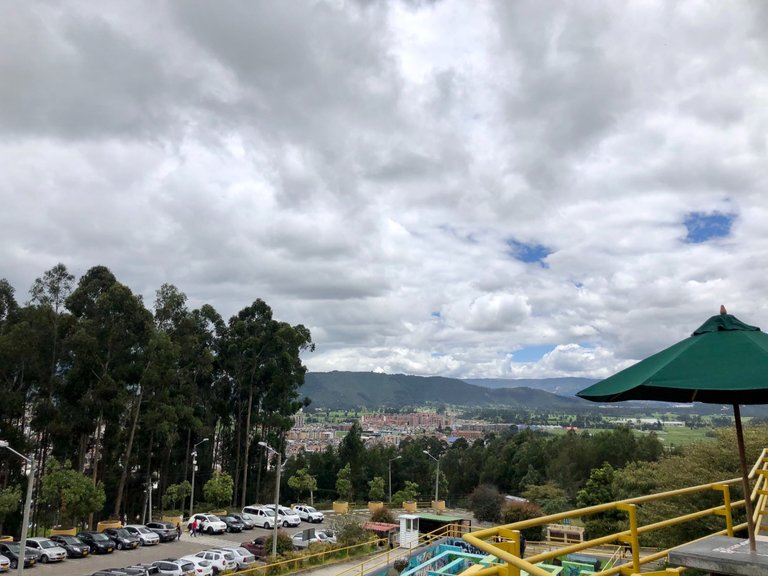
Tickets in hand, we head for the Plaza del Minero towards the entrance of the Cathedral.
The mine in which the cathedral is located is an active salt mine and is still commercially exploited. Its origins date back to pre-Hispanic times when the Muiscas, inhabitants of this region called Cundinamarca, began the exploitation of salt, which they used for trade.
The construction of this cathedral started in 1991, but it is not the first one. The old salt cathedral built in Zipaquirá was closed down because it was considered unsafe.
Old cathedral
Years before the underground church was built (around 1932), the miners had carved a sanctuary, as a place for their daily prayers asking for protection to the saints before starting to work. In 1950, the construction of a bigger project had begun: the Salt Cathedral which was inaugurated on August 15, 1954, and dedicated to Our Lady of the Rosary, Patron saint of miners. It was compound of three naves and a monumental cross. Part of the galleries were actually carved by the ancient Muisca. However, as the church was carved inside an active mine, structural problems and safety concerns led the authorities to shut it in September 1992. Source
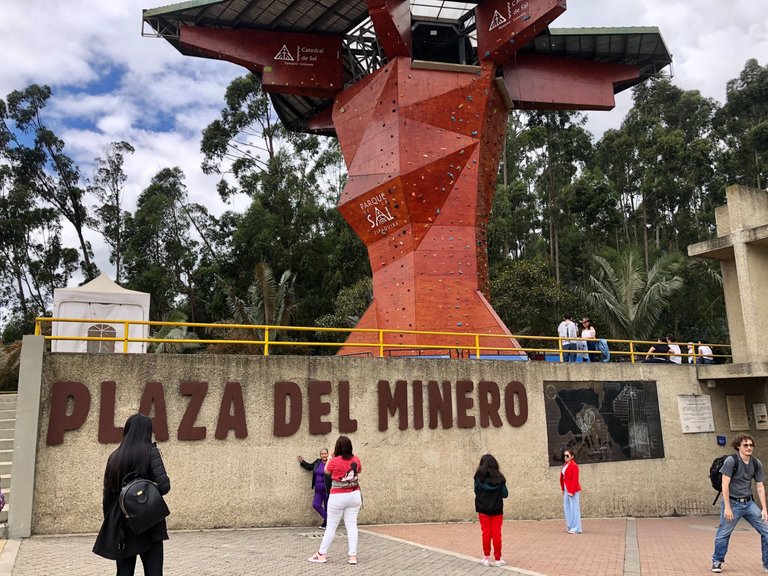
When you enter the mine, you are given some safety instructions. And they tell you to join the mine's wifi network to be connected during your stay in the mine.
New cathedral
In 1991 the construction of a new cathedral was undertaken, 200 feet under the older one. This new Cathedral was inaugurated on December 16, 1995. Its various corridors and sanctuaries were achieved by making small but significant additions to the caves left behind by previous mining operations.Source
We enter through a kind of tunnel. The lighting plays a fundamental role in the whole place. And as we enter the mine, there is a part of the tunnel where you can see the flags of the countries of the group of visitors who are about to start the guided tour.
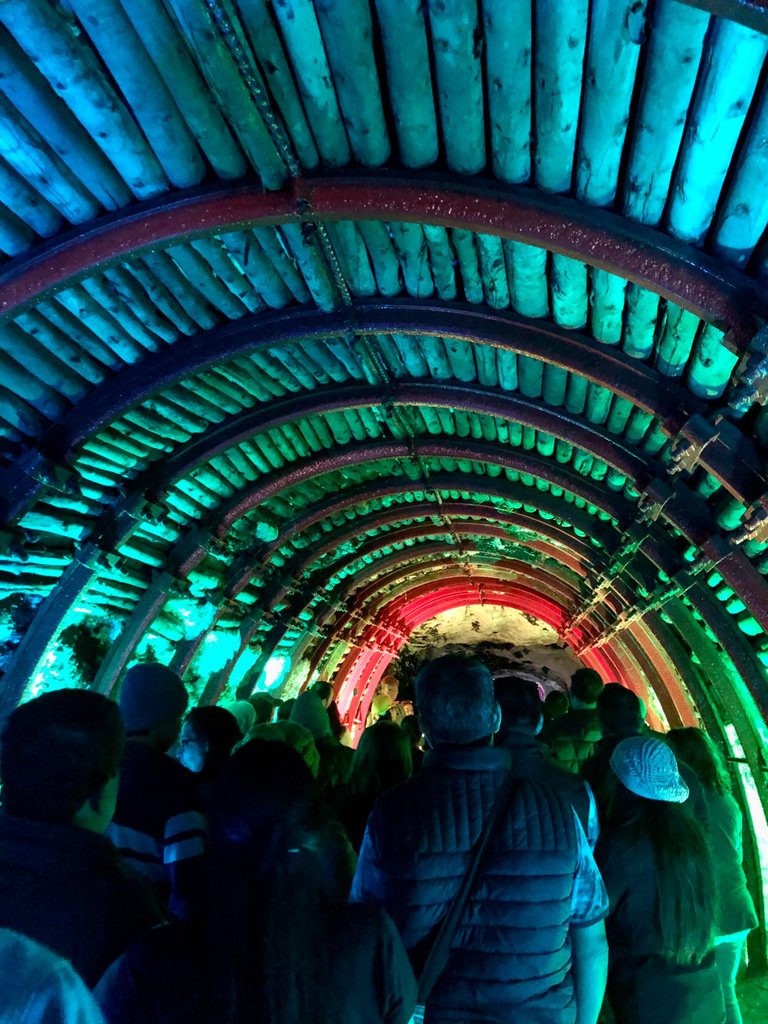
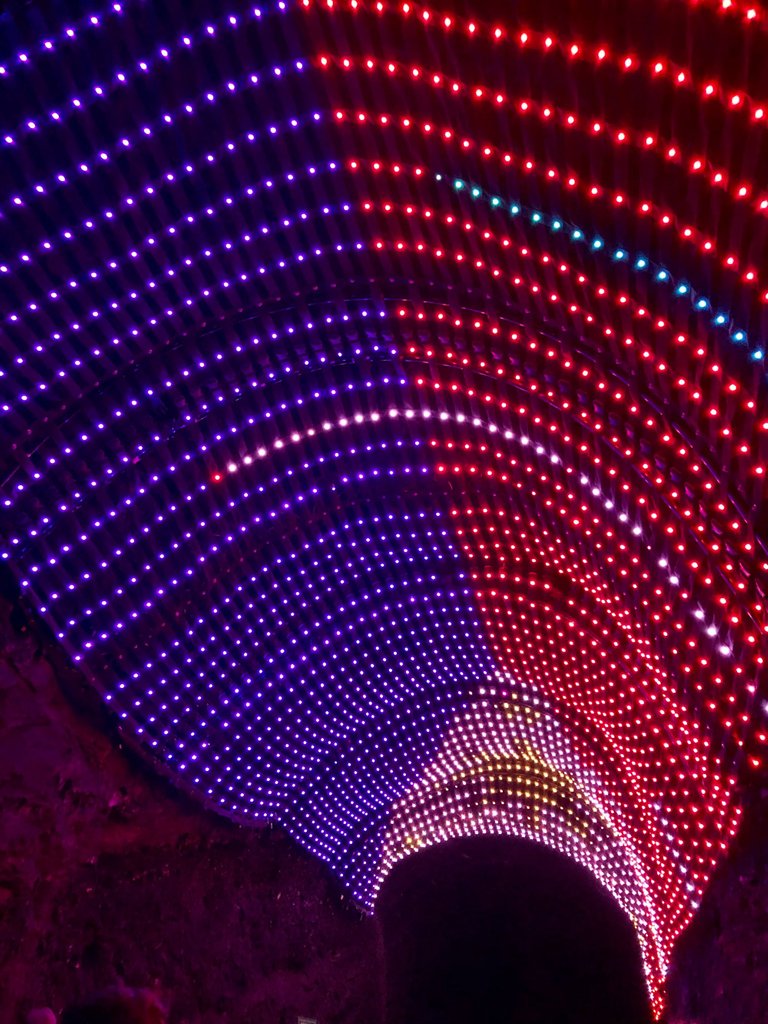
In the first part of the route, there are several caves with crosses, 14 to be exact, which represent the Stations of the Cross.
The photos below are from some of the stations, in no particular order.
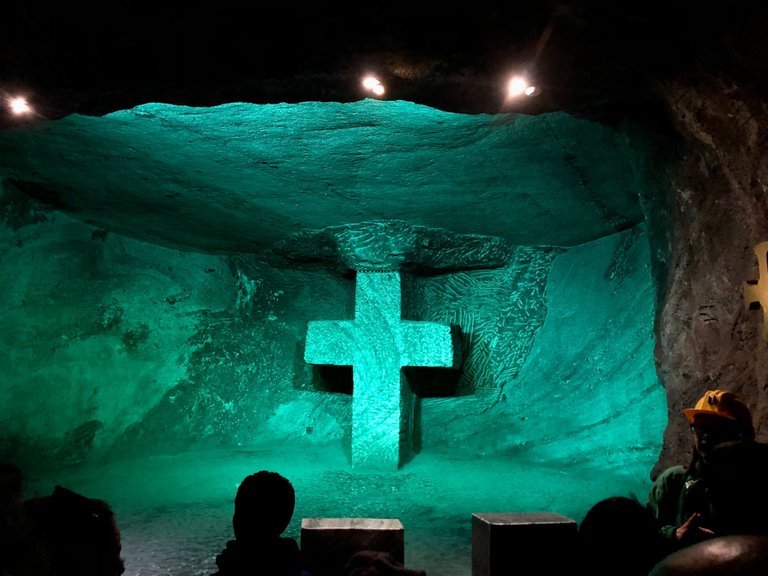
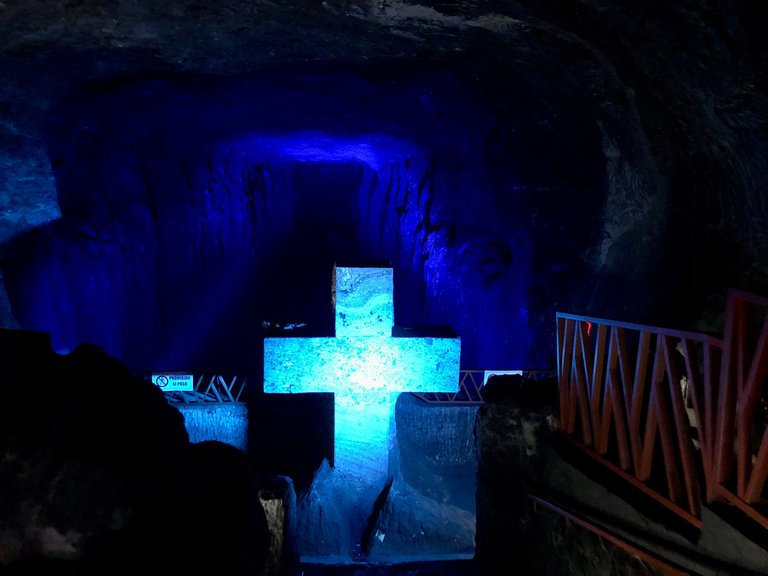
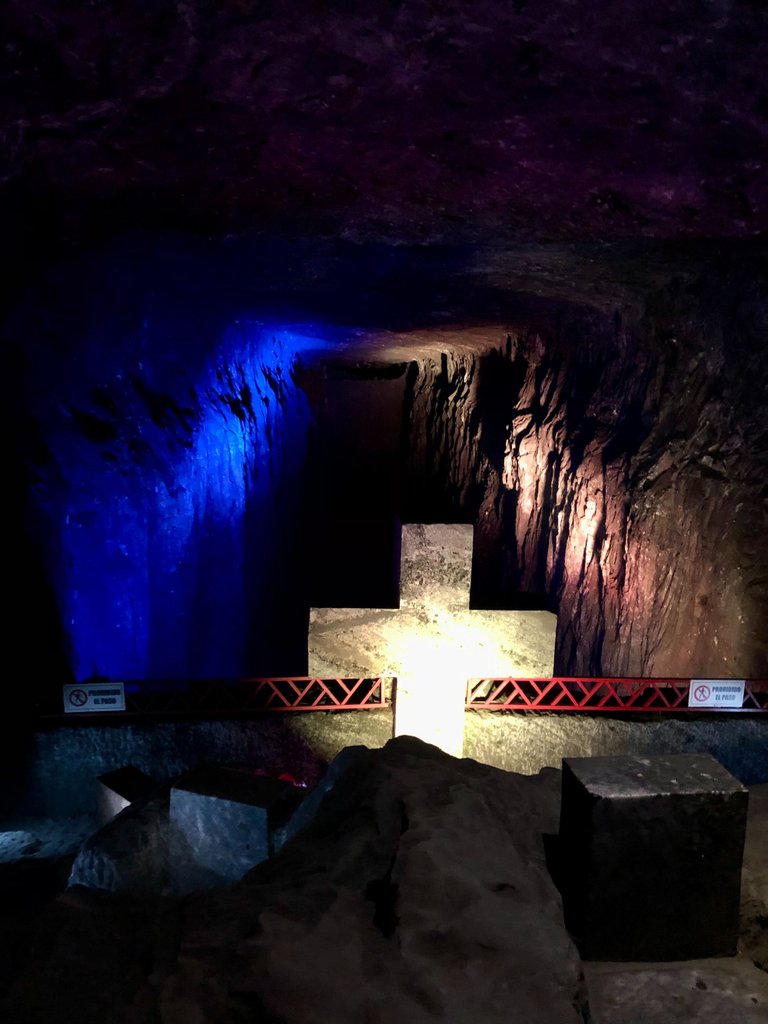
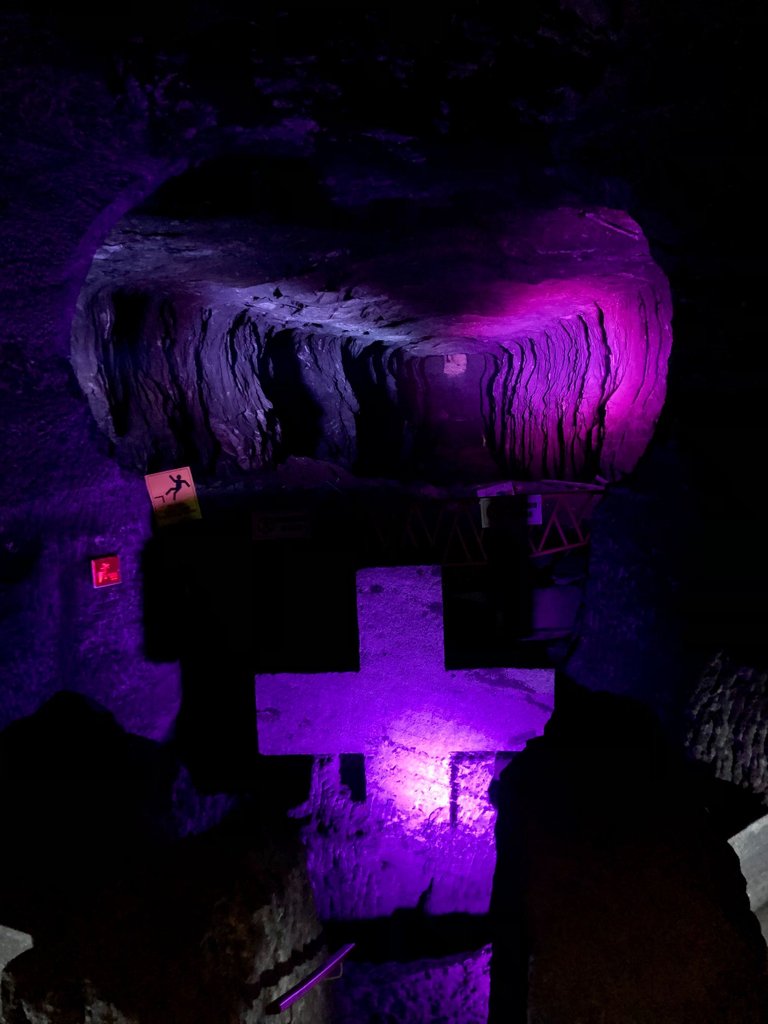
As the visit progresses, you stop at each of the stations, where, in addition to the explanation of the Stations of the Cross, you are given some interesting details of the workings of the mine and information about the construction of the cathedral.
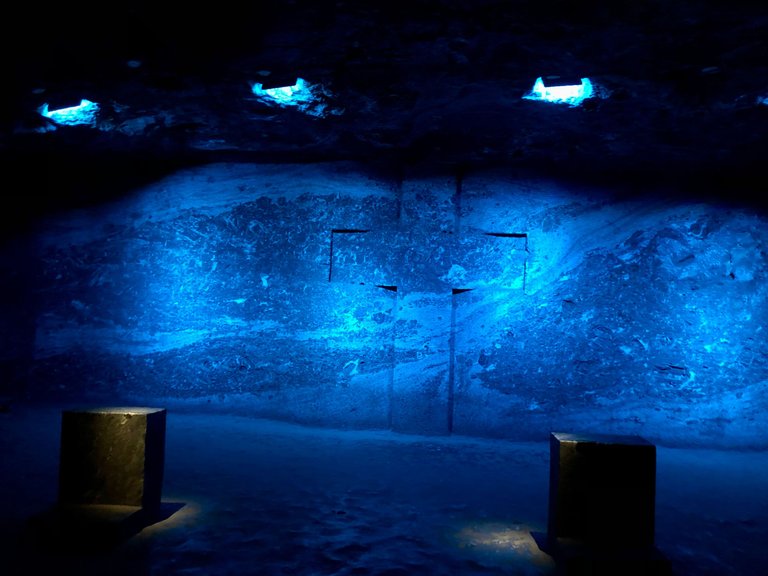
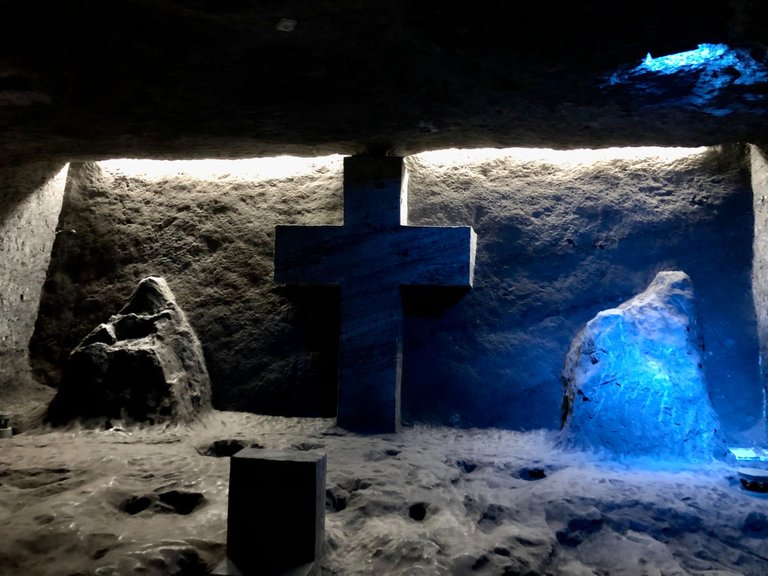
At the end of the Stations of the Cross, we reached an enclosure from where down you can see the altar of the nave of the cathedral.
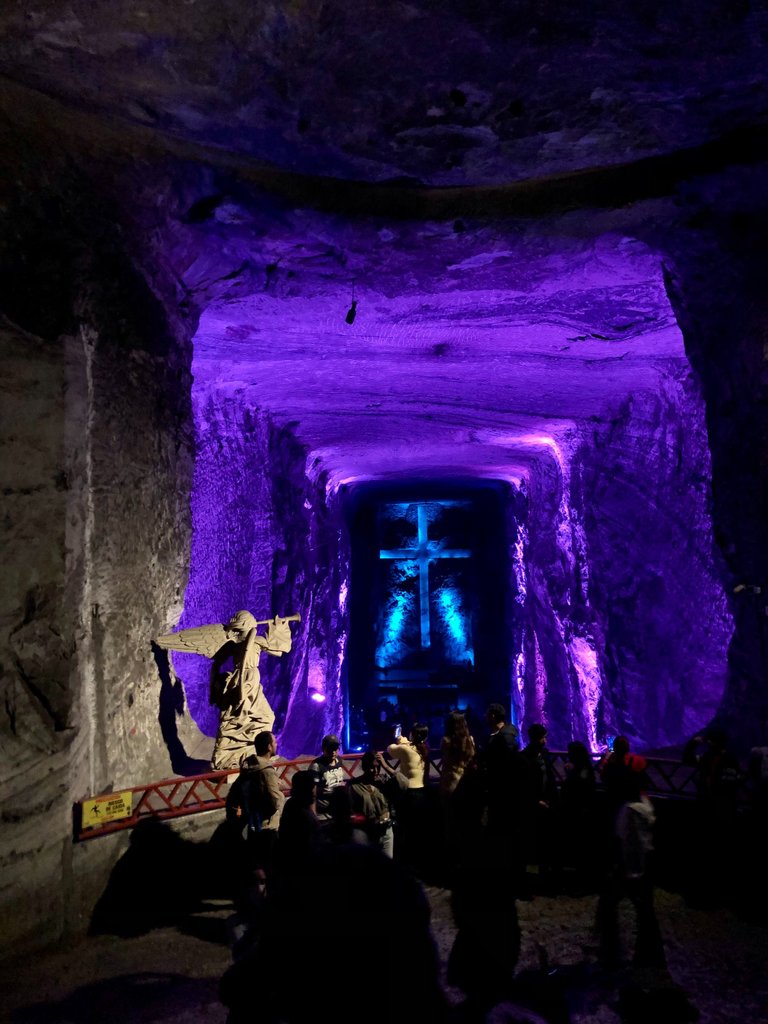
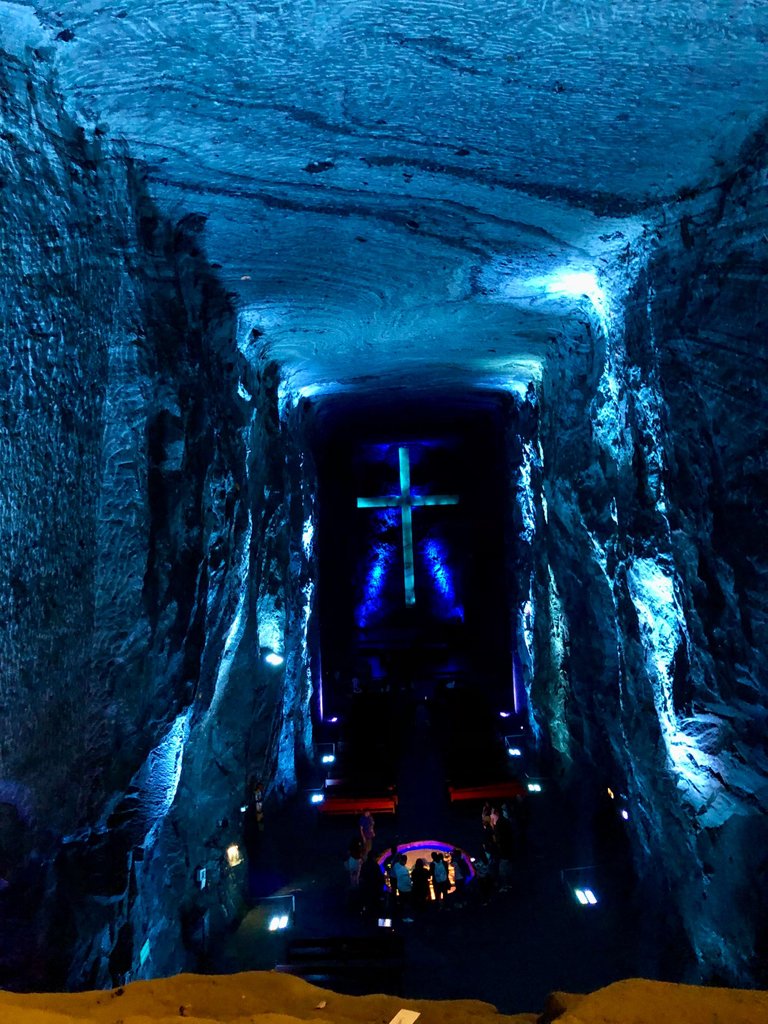
There is a big statue of an angel playing the trumpet at this point.
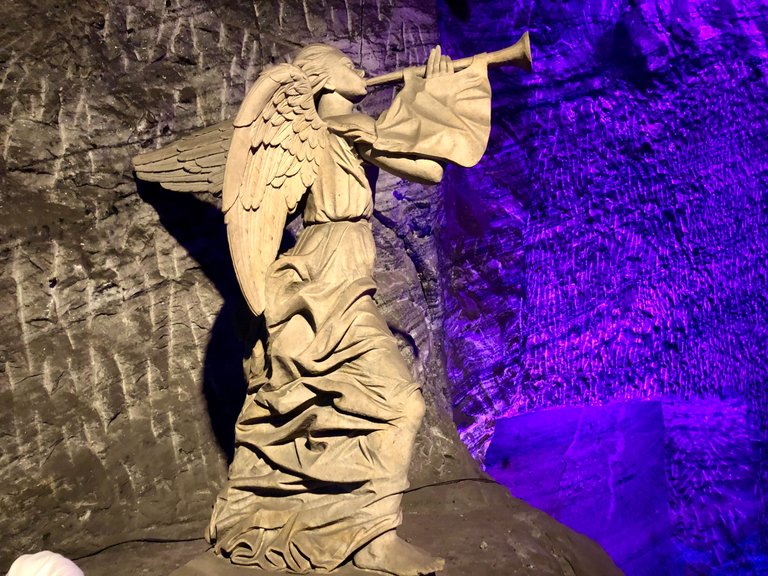
And the illumination and the immensity of the place carved in the salt give the nave of the cathedral an impressive appearance.
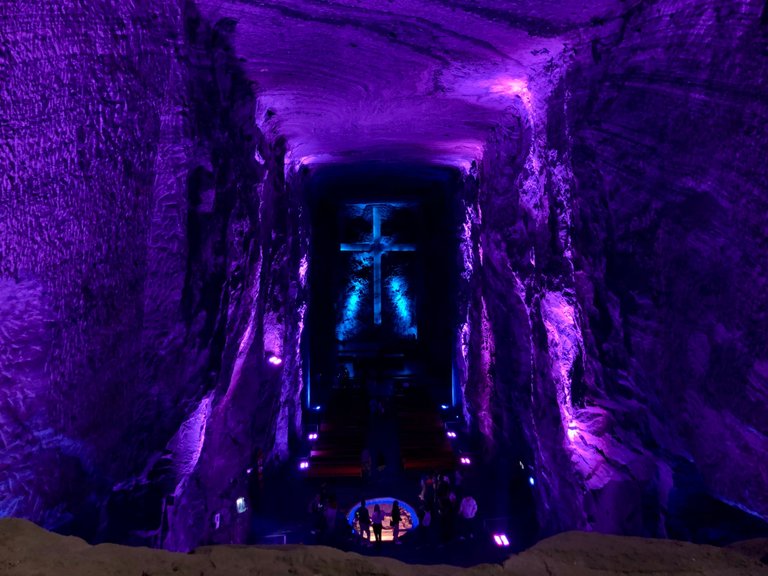
The visit continues the tour, and we go more down into the mine to reach the main nave. But first, we pass a chapel which the guide explains to us has a special meaning for the miners. It is where the miners usually celebrate mass, and the chapel is dedicated to the Virgin of the Rosary of Guasá, who is the patron saint of the miners.
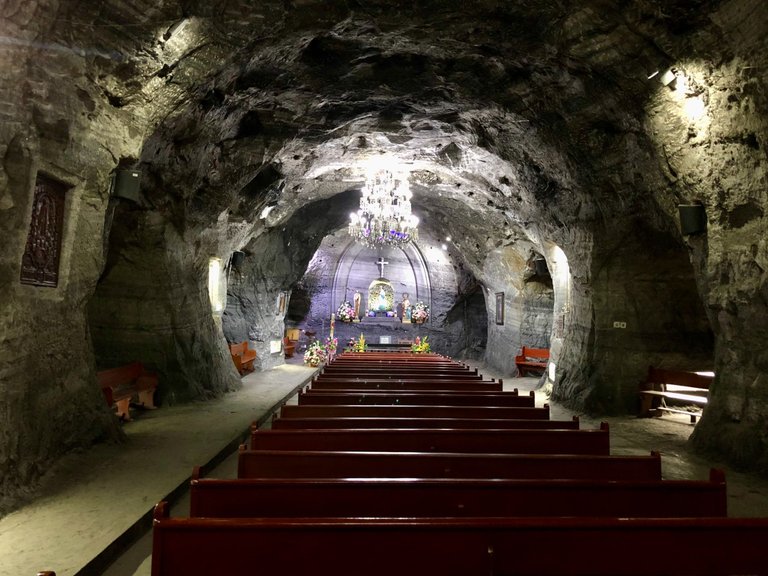
Continuing the tour we pass a point where there is a carved nativity scene.
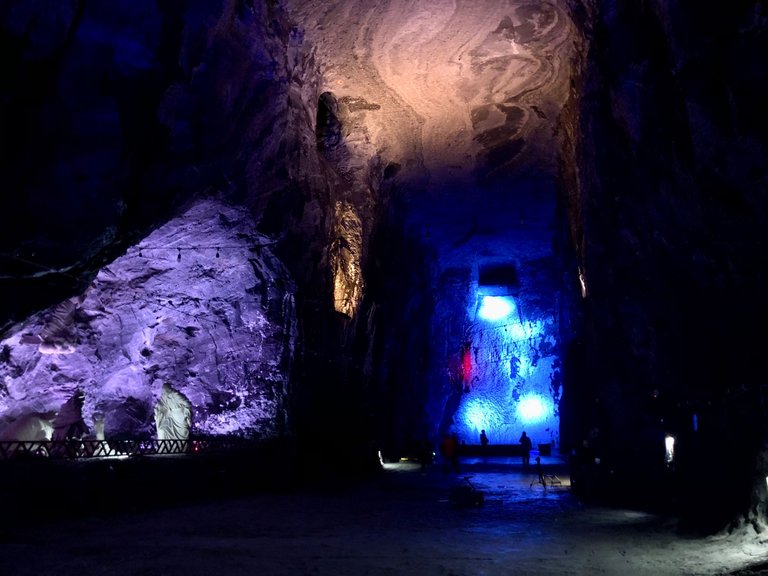
Finally, we arrive at the nave of the cathedral, where if you look at the back, you can see the point with the figure of the angel from where we observed the altar for the first time.
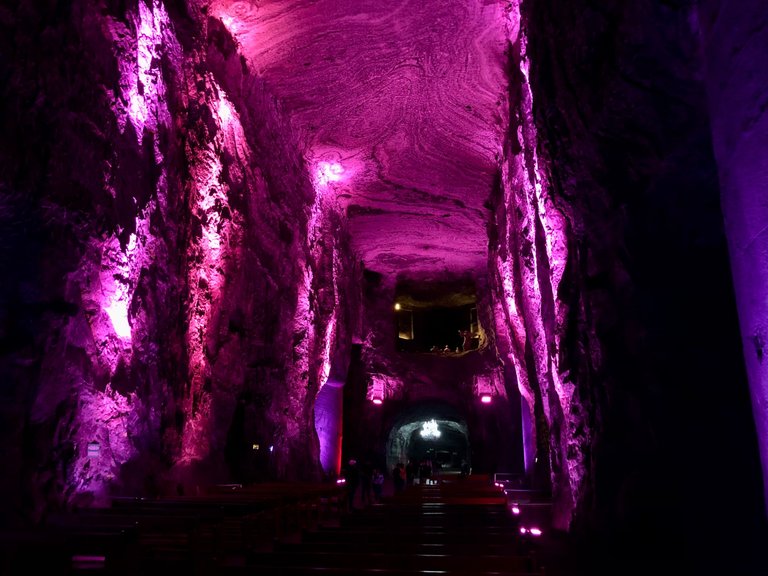
And we could admire the huge cross. When you look closely at it, you realize that it is dug into the wall of the mine. And by the way it is illuminated, it seems to be suspended.
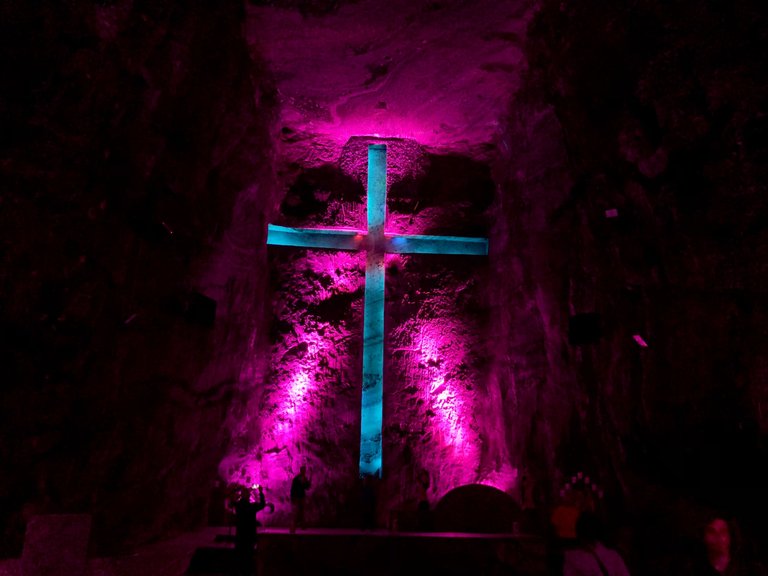
The cross and the nave of the cathedral are stunning.
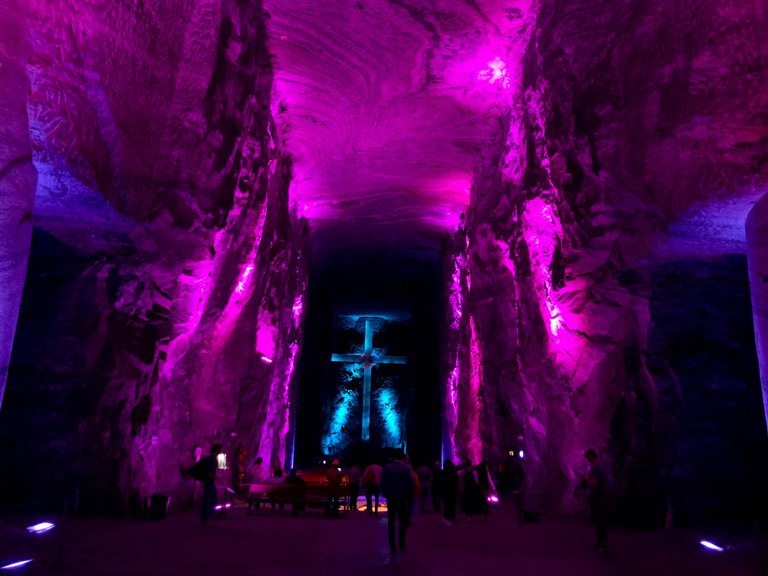
This was another of the salt-carved scenes we saw before entering the commercial area of the mine.
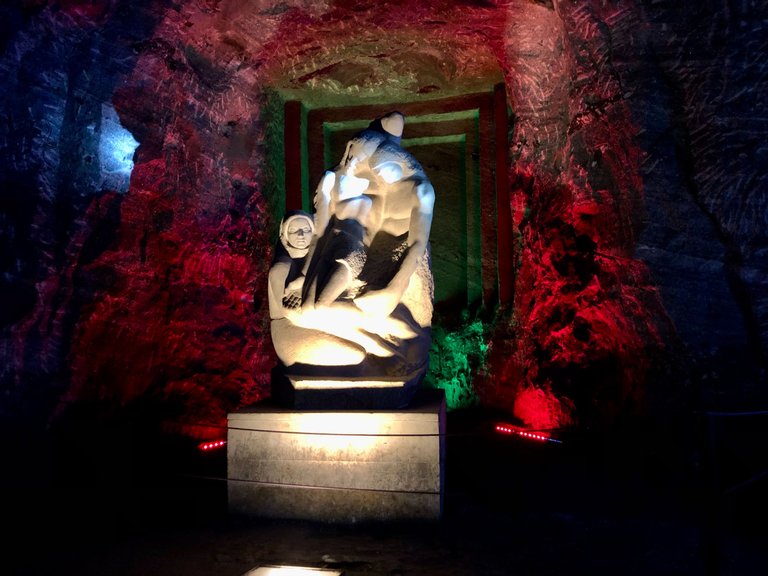
At the end of the visit to the cathedral, you enter a shopping area with cafes and shops, where you can buy anything from Colombian handicrafts, and souvenirs carved in salt, to emerald jewelry, or even have a spa treatment.
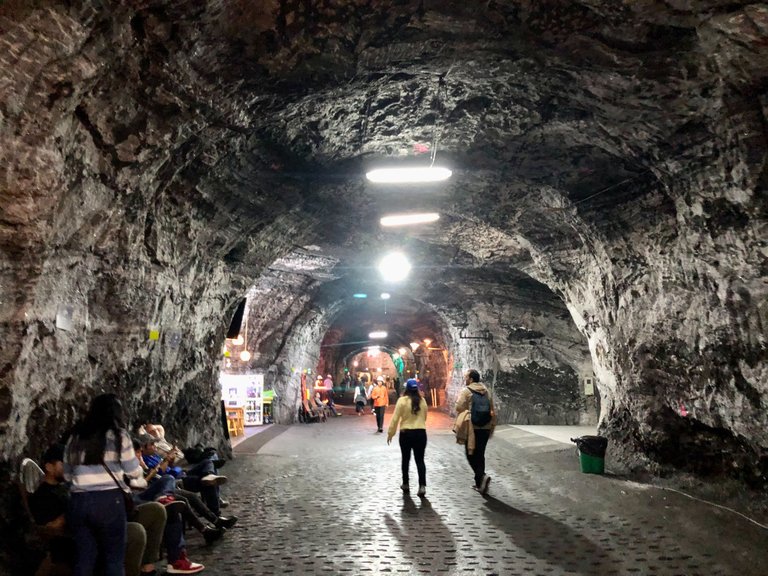
We finished the guided tour and didn't spend much time in this area, as we wanted to take a walk around Zipaquirá before heading back, and I'll tell you about the town some other time. So we decided to leave the mine. We had the option of going out the way we came in and undoing the whole route, or from the point where we were, we could take a train inside the mine that takes you outside, and that's what we did.
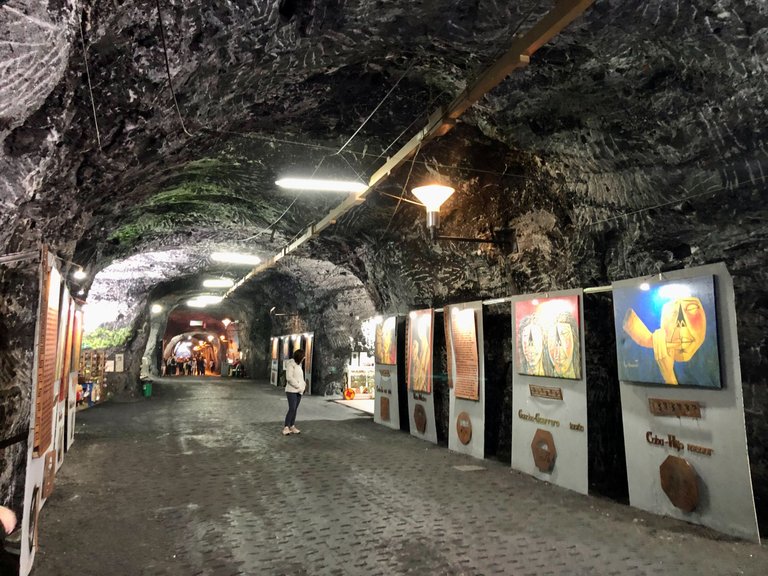
This last photo was taken by my son, who had to go next to the driver of the train at the exit of the mine.
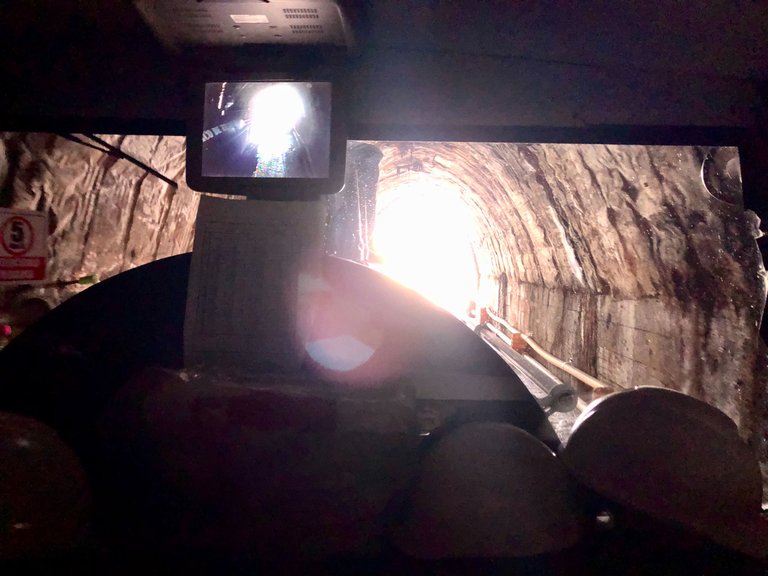
The Salt Cathedral is a masterpiece of engineering. It is impressive and well worth a visit.
Thank you for reading!






